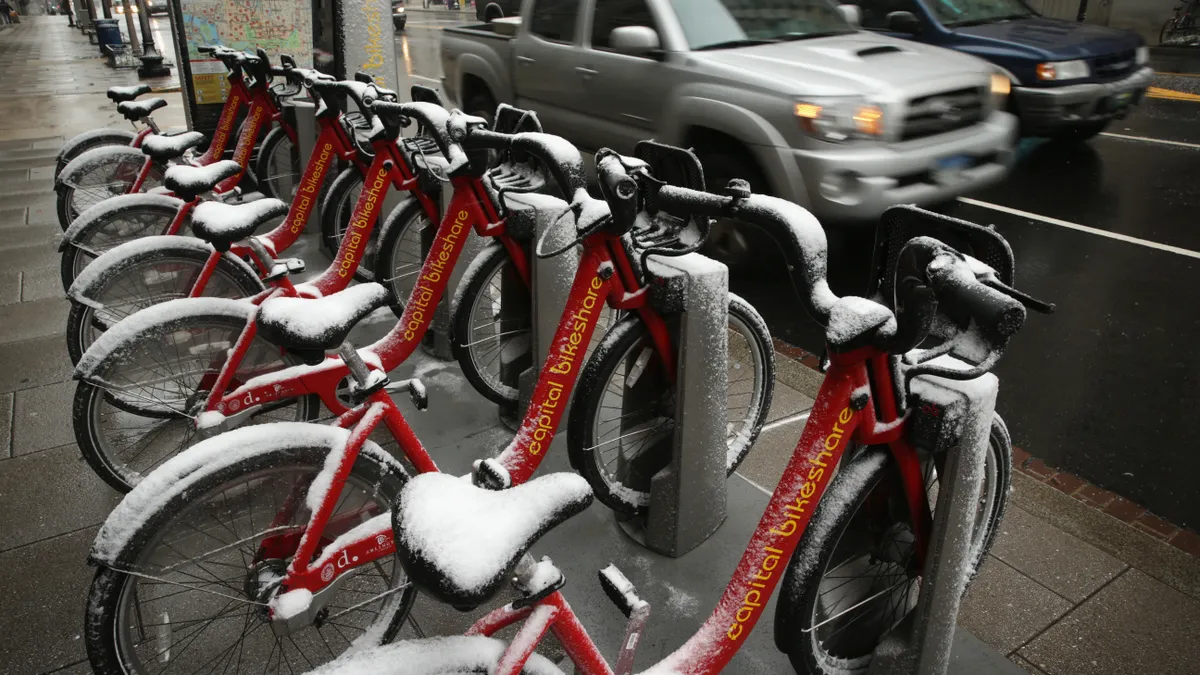The role of micromobility is not discussed much in climate action plans but there are opportunities to do so going forward, the Shared-Use Mobility Center highlighted in a webinar last week. The discussion followed an SUMC report published in October that evaluated micromobility in local climate strategies and best practices.
Nate Seeskin, program coordinator at SUMC who led the report, noted that around 300 cities have established either a scooter or bike-sharing system, citing a stat from the North American Bikeshare and Scootershare Association last year. And today, there’s potentially new momentum thanks to federal funding for micromobility and climate-supportive policy frameworks through the Inflation Reduction Act and the Infrastructure Investment and Jobs Act, Seeskin said.
“We think that climate action strategies are really important because they are visionary documents for what cities can do to address climate change,” Seeskin said. “Unfortunately, micromobility itself is often minimal in climate action plans, and we want to offer some strategies for how micromobility can be discussed more holistically in plans moving forward,” he said.
The SUMC report considered four categories of variables:
- Modal shift: whether a plan has quantifiable goals around the number of micromobility trips and diversion of car trips.
- Equity: whether a plan acknowledges the need to expand access to micromobility.
- Infrastructure investments: whether a plan recognizes parking, mobility and charging hubs as part of the solution to expanding micromobility.
- Policy supports and incentives: whether a plan discusses micromobility and transportation demand management as a strategy to address climate change and whether it outlines funding sources to support and deploy micromobility.
Including micromobility in local climate strategies matters because it increases recognition from cities. Transportation is frequently the largest source of greenhouse gas emissions, and cities need more tools to address the climate crisis, SUMC noted.
“We think it's really important that different plans for a city be in conversation with one another,” Seeskin said.
Some of the plans that SUMC considered the strongest for micromobility included Denver, Chicago and San Diego, which were among the cities represented on Wednesday’s webinar. Denver’s Mobility Action Plan, for example, calls for 8% of commuters to bike to work by 2030. Chicago’s 2022 Climate Action Plan calls for increasing shared micromobility trips by 30% by 2030, reducing vehicle miles traveled by 2.2 million miles. And San Diego’s Climate Action Plan calls for placing scooters at mobility and transit hubs to improve conditions for pedestrians and cyclists, SUMC reported.
Generally, best practices include expansive definitions around active transportation; applying existing language from leading cities while using specific and flexible language; recognizing that micromobility is rapidly evolving; and stipulating that micromobility vendors provide data, SUMC concluded.
Lyft has also identified some best practices from cities where it operates, which include Chicago and Denver. Environmentally and financially sustainable programs will require public-private partnerships that invest in programs and fewer operators to promote efficiency, said Tejus Shankar, policy development manager at Lyft focused on transit, bikes and scooters, during the webinar.












